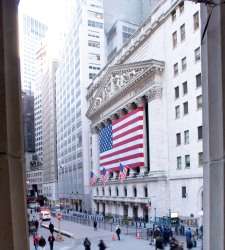
The Eco30 index just launched, and it is the first global index created by a media company. Thirty companies are listed from all across the world according to a dozen criteria based on FactSet data.
Also, the index will be used by the German and Swiss stock markets, which means that it will become a bigger index than Stoxx. It will surpass the Eco10, the index that elEconomista came up with in 2006 in an effort to beat the Spanish stock market. Eco30 will try to beat the Stoxx600 and S&P 500.
The portfolio includes companies in all the markets that individual investors can purchase shares directly. The list of stocks comprises part of the old Selectores de Valores de elEconomista index, another tool that this newspaper launched in January 2007 through a partnership the American financial research and analytics company FactSet. That index was put together from ten fundamental criteria that analyze mid-term valuation forecasts from major analysis shops, each stock's position in relation to comparable companies within the sector, the PE ratio, mid- and long-term earnings forecasts, yield from dividends and investment house recommendations.
In addition to these first selection requirements, elEconomista has incorporated other qualifications. Firms need to have market capitalization above 4 billion euros and a clear buy indication from investment firms. Further, with aims of maintaining a balanced portfolio of stocks, no business sector will have more than four companies listed on the Eco30.
As a result of this selection process, the index will carry a total capitalization of around one billion euros. Specifically, 983,143 million euros. This is nearly double the value of the Spanish stock market, which will stay the case until its next review in July 2013. Investing in any of these stocks would be a wise choice, because all of them have solid fundamentals and it's worth having them in a portfolio. To mention just one upside to any of these stocks would be hard, but perhaps one of the biggest upsides is that more than half of the stocks have the potential for generating big profits and savings in the near term.
Here is one figure: among all the companies on the Eco30, 35% of them are expected to increase profits in the next three years.
The Eco30 by sector
In an attempt to reduce risk, the index is diversified by sector. Technology and minerals are the heaviest weighing sectors on the index. Apple is foremost among tech firms. There are many reasons to believe that the company will bounce back, but other lesser-known companies will play an important role on the index as well. For example, the Canadian firm CGI Group is expected to grow its profits more than any other company listed on the Eco30 during the next three years. CGI Group quadrupled its profits this year. The French firm Capgemini and Japan's Hitachi will also perform well.
Four mineral companies appear on the index. Despite the gains that gold posted this year, investment funds like Canada's Kinross and Goldcorp or the United States firm Freeport or Britain's Rio Tinto all show a lot of potential.
Three risky financials are on the index for investors willing to place some bets: DNB Asa, Invesco and Prudential Financial. The Eco30, as a global index, also lists three petroleum firms: HollyFrontier, Pacific Rubiales and Noble. Three car companies: Renault, Michelin and Nissan. Three pharmaceutical companies: Astellas, Watson Pharmaceuticals and Roche. And three industrial companies: Rexam, International Paper and Deutsche Post.
Each sector will face its own challenges in 2013, so sector-based diversity will be critical for sound investing. One media company, Time Warner Cable, appears on the list and the telecommunication firm KDDI as well. Two airlines, Delta and EADS, and two chemical companies, LyondellBasell and Arkema, are listed. All these companies have a history of growth.
The Eco30 abroad
Because there are twelve American companies on the index, their success will determine how the new index evolves -- and whether it continues to be covered by Bloomberg, Reuters and, of course, elEconomista.